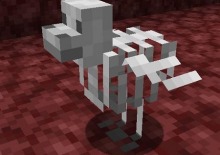Advertisement
Terror
Terror is a game that places the player in an environment where observation, timing, and movement are essential for survival. The goal is not to defeat enemies through strength, but to remain unnoticed and escape danger using the surroundings. The design focuses on limited vision, sound cues, and the unpredictability of encounters. Players must constantly assess their surroundings, interpret distant noises, and move strategically through dark, narrow spaces to avoid being caught. The game rewards patience and awareness more than speed or aggression, making each decision feel risky and important.
How Movement And Tension Shape The Experience
In Terror, movement must be carefully calculated. Sprinting without cause can reveal a player's position, while standing still for too long might invite unexpected danger. The game relies on slow pacing and restricted visibility to increase tension. Shadows often conceal important items or exits, and players are frequently forced to explore areas with minimal lighting. This creates a sense of unease through visuals alone, and through how the player interacts with the environment. Navigating through the game world requires a balance between bold exploration and careful retreat.
What Players Must Pay Attention To
The player's survival depends on more than just reacting to immediate threats. Many scenarios in Terror are built around subtle signs—creaks in the floor, flickering lights, or distant sounds. Recognizing these signals early can prevent dangerous encounters or help locate hidden routes. Certain sections of the game include puzzles or locked passages that require finding keys or objects while under the pressure of being hunted. These elements increase complexity without shifting the core focus away from survival. No direct combat means that players must plan every step with caution and keep track of where they've already been.
Common Features And Environmental Elements
The game contains multiple areas, each with their own hazards and challenges. These range from abandoned buildings and tight ventilation systems to wide-open yards with few hiding spots. Players often rely on audio cues to sense approaching threats or safe zones. Environmental interaction is minimal but meaningful—lockers, doorways, and crawl spaces offer temporary safety but may also limit escape if used carelessly. Inventory is limited, and decisions on what to carry often determine success or failure during crucial moments.
Elements Typically Found In Terror
· Narrow corridors and obstructed views
· Audio-based detection systems
· Objects to collect, such as keys or notes
· No weapons or direct means of defense
· Threats that move unpredictably through zones
Terror builds its experience not around action, but through tension created by vulnerability. The absence of tools to fight back turns even simple decisions into risks. Every shadow may hide a threat, and every sound demands attention. The game is structured to keep players alert at all times, offering a slow, calculated pace where survival depends on learning the rules of the environment rather than trying to overpower it.








































































































